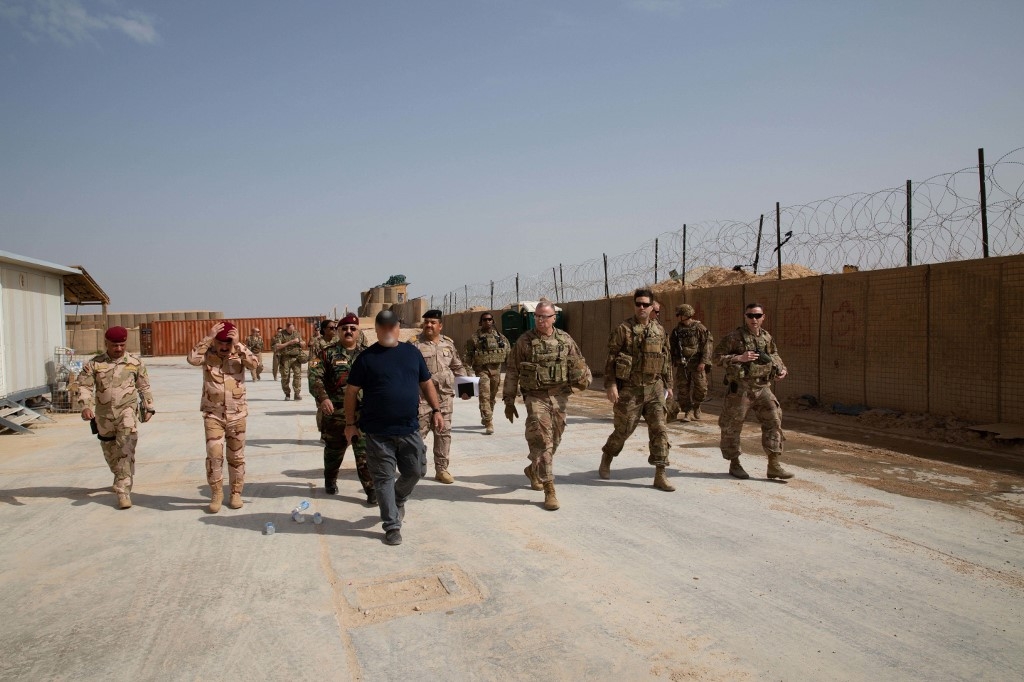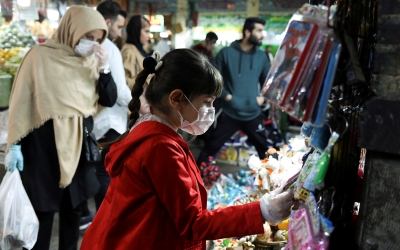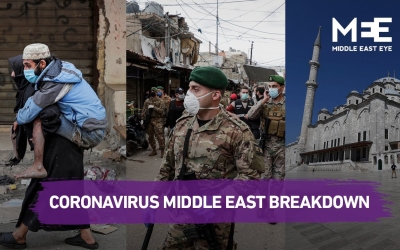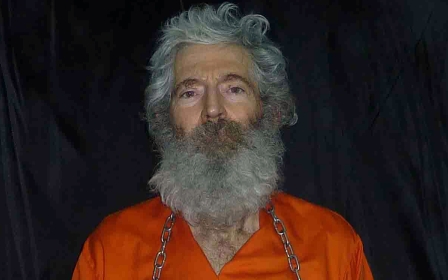Iranian press review: US accused of reinforcing military presence in Iraq

US troops reinforce bases in Iraq
The United States has allegedly deployed new military personnel to the Ain al-Asad air base in Iraq, which was targeted by an Islamic Revolutionary Guard Corps (IRGC) missile attack in early January, Iran’s official news agency IRNA reported, quoting Iraqi sources.
IRNA quoted Qusay al-Anbari, a high-ranking member of the Iraqi Hashd al-Shaabi paramilitary group, as saying that US withdrawal from al-Qaim base was only a tactical move to increase the number of American forces in Ain al-Asad base.
Anbari also claimed that the US had increased the number of its troops in Iraq after two rocket attacks on Camp Taji, north of Baghdad, killed two American and one British soldiers in early March.
In another report, IRNA claimed that US forces were secretly preparing to build a new base in the Umm Samij area in Iraq’s al-Anbar province.
Iran’s official news agency also quoted Karim Alawi, a member of the Iraqi parliament’s security and defence committee, as saying that the US military has already started to deploy the Patriot missile defence system in Iraq.
Meanwhile, on Wednesday IRNA’s Baghdad bureau reported that “a number of US forces in Iraq were infected by the coronavirus”. IRNA did not provide any further detail about the number of allegedly infected soldiers.
The report also claimed that the officially released numbers indicating that between 5,000 and 6,000 US troops are in Iraq were incorrect, and that there were about 20,000 US forces and military contractors in the country, who, it said, were perceived to be a possible threat to spread the coronavirus among Iraqis.
French coronavirus aid rejected
A new political standoff between Iranian hardliners and members of President Hassan Rouhani’s government has ended with the rejection of an offer by health NGO Doctors Without Borders (MSF) to set up a 48-bed field hospital in Iran’s third-largest city, Isfahan.
On 22 March, the official Twitter account of the Iranian embassy in France announced that the MSF had transferred medication, masks, special gowns and facilities in a charter flight from the French city of Bordeaux for a field hospital in Iran to contain the fast-spreading coronavirus.
Iran is the worst infected country by the virus in the Middle East, recording 2,234 deaths and 29,406 infected COVID-19 cases as of Thursday.
The Iranian embassy, in appreciation of the MSF’s move against US sanctions on Iran, wrote: “In the world’s current situation, which is inflamed by the coronavirus, it is necessary to strengthen international unity.”
However, hardliners in Iran immediately reacted to the news by bringing up the scandal of HIV-contaminated blood products imported from France to Iran in the early 1980s. The products had infected over 900 haemophilia patients in Iran and created the first wave of AIDS in the country.
“It is important to remember that France sent contaminated blood to Iran during the climax of the Iran-Iraq war, and in a time when they [France] provided the most modern weapons of mass destruction to Iraq,” Hossein Shariatmadari, the managing editor of ultra-conservative Kayhan daily, told Fars news agency.
During the eight years of the Iran-Iraq war, the US and its Western allies provided military and intelligence assistance to the then-president of Iraq, Saddam Hussein.
In an interview with Fars, Iranian conservative legislator Abolfazl Aboutorabi voiced his doubts about the true reasons for the presence of an MSF team in Iran, while European countries adhere to US sanctions that have pushed Iran’s economy into a deadly spiral.
“What good does it do to us, a 45-bed field hospital inside the compound of Amin Hospital [in Isfahan]?” Aboutorabi told Fars news agency, referring to the MSF field hospital.
Inflation could hit 40 percent
Iranian economists have estimated that the annual inflation rate for Iran’s current fiscal year (started on 20 March) could stand between 35 and 40 percent, as a result of new US sanctions and the economic impacts of the coronavirus outbreak.
The new assessments were released despite an earlier report from the government’s Statistical Centre of Iran, which announced that the inflation rate for the first three months of the Iranian year (20 March to 30 June) would be below 30 percent.
Iranian economist Ali Dini Torkamani told Shargh daily that the Statistical Centre’s numbers were based on the studies which were carried out before the coronavirus outbreak in Iran.
“When the coronavirus epidemic ends in the country, we will see the [real] impact of the virus outbreak and the US new sanctions on Iran’s petrochemical, gas and metals exports,” Torkamani told the daily.
According to the economist, Iran will experience an inflation rate of 35 to 40 percent in the current Persian year and the country’s economic might shrink by 1 to 2 percent.
Fellow economist Siamak Ghassemi has also predicted the same numbers for economic growth in Iran, and predicted that a new wave of unemployment would hit Iran in coming months.
Iran’s poorest province hit hardest
A report by ILNA news agency has described the dire economic situation of residents of Iran’s most poorest province, Sistan and Baluchestan, which has been hit hard by the economic impact of the coronavirus.
The southeastern province is heavily dependent on domestic tourists visiting during the two-week Nowruz holiday. But this year, the coronavirus and measures to ban non-essential travel have seriously damaged the tourism industry in the country.
ILNA has reported that in provincial capital Zahedan, unofficial petrol vendors have no customer, as well as shops selling second-hand Western clothing brands.
“Unemployment is evident at every corner of the city,” the news agency wrote. “The citym which already had many poor and unemployed residents, is now drowning in unemployment.”
According to the ILNA, Sistan and Baluchestan had Iran's highest unemployment rate in 2019 at 15.2 percent. Some 70 percent of its population lives under the poverty line.
While the coronavirus death toll in Sistan and Baluchistan has not been not as high as in other provinces in Iran, provincial officials are worried about the long-term economic impact of the pandemic on lives of the province’s residents.
As of Tuesday, Sistan and Baluchistan had registered 150 Covid-19 cases and nine deaths, according to the Fars news agency.
* Iranian press review is a digest of reports that are not independently verified as accurate by Middle East Eye
Middle East Eye delivers independent and unrivalled coverage and analysis of the Middle East, North Africa and beyond. To learn more about republishing this content and the associated fees, please fill out this form. More about MEE can be found here.







